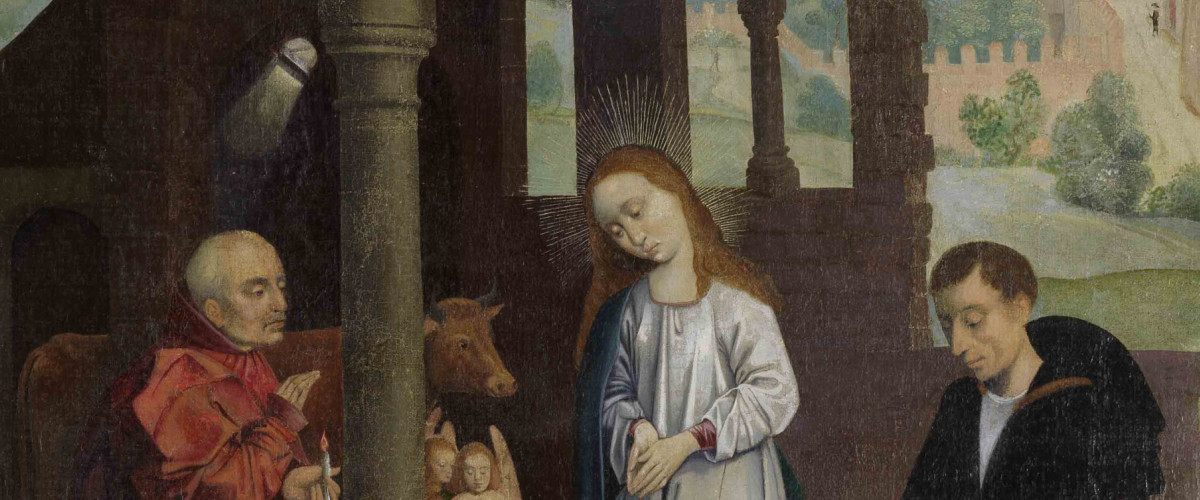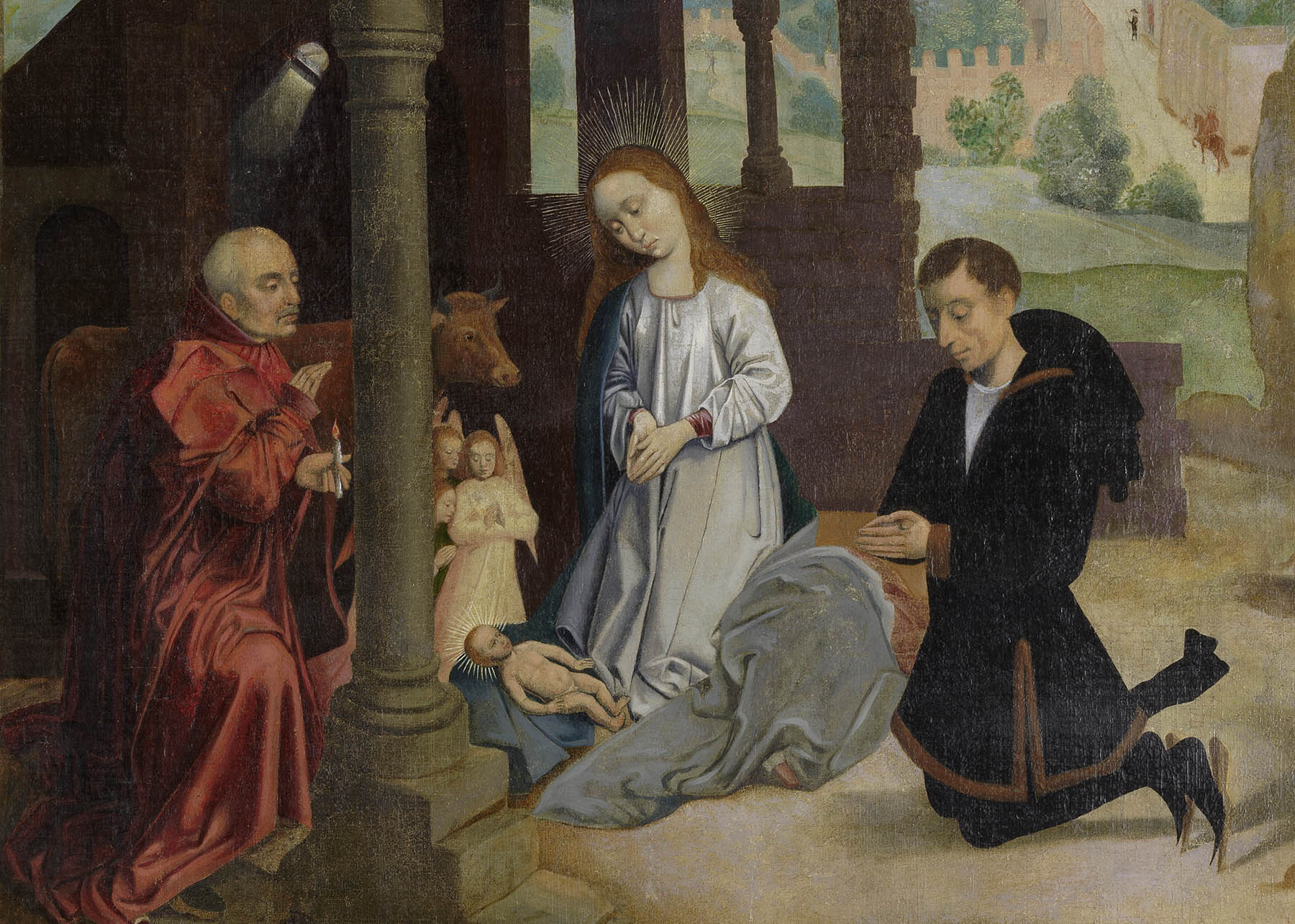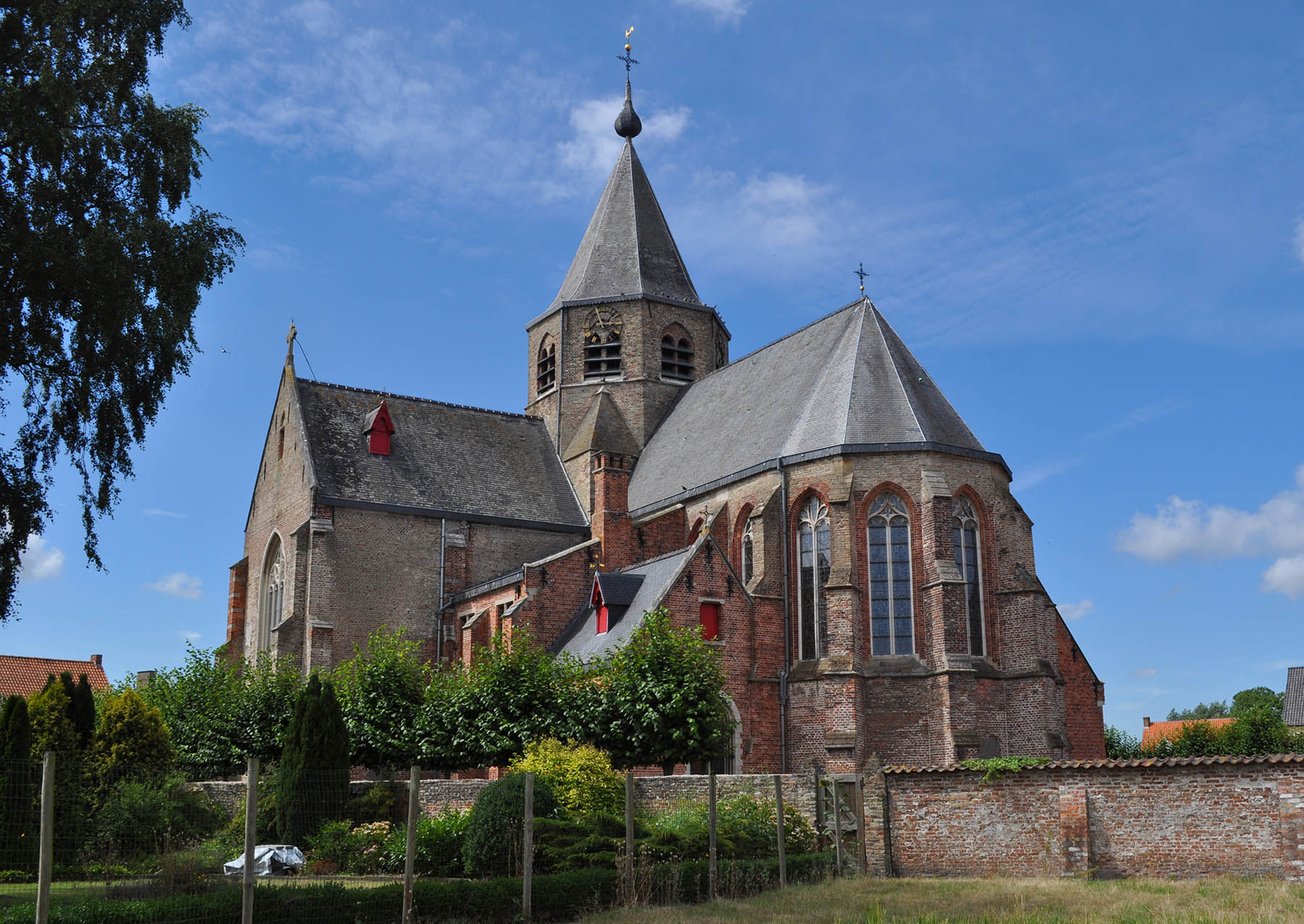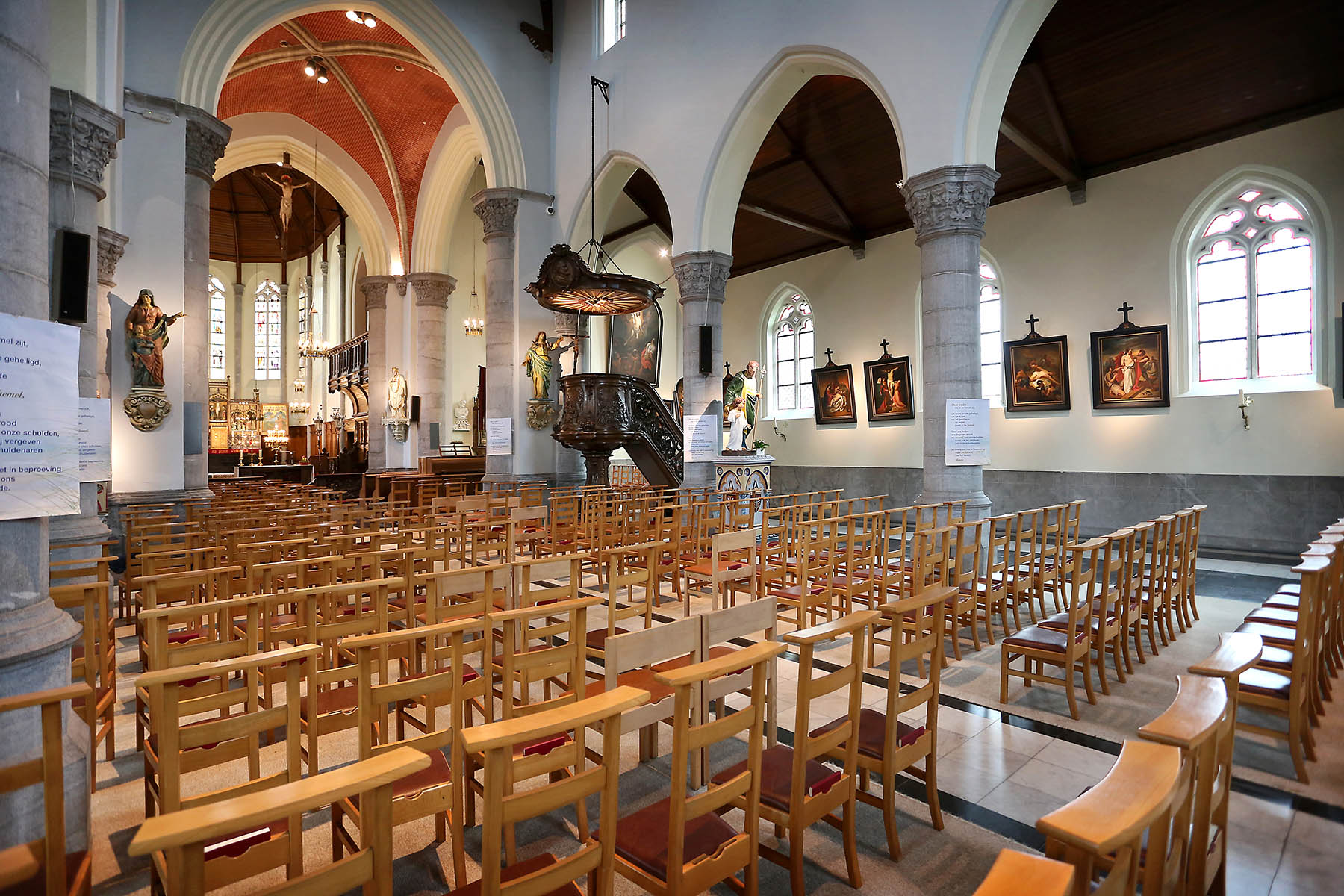It is not unusual to encounter lost travellers in this town who were aiming to go to Middelburg in the Netherlands and blindly followed their GPS instructions. The Flemish Middelburg covers only 6 km² but is located on quite a few biking and hiking crossroads. Don’t just pass through but take some time to visit the intriguing church of the two apostles Peter and Paul, who according to folklore died on the same day and within the same hour.
Church of Saint Peter and Saint Paul
This Gothic church (with cemetery) was built at the initiative of Pieter Bladelin, a leading official of the Burgundian dukes. His castle was located nearby and his mausoleum can be found in the church. Starting around 1450 he developed Middelburg into an authentic town. In the late 19th century the church was restored and expanded in neo-Gothic style. It comprises a particularly fascinating church treasure.
Copy After the Bladelin Triptych - Jan Ricx (1603)
This work dating back to 1630-1631 was created by the Bruges painter Jan Ricx for the main altar of the church at the behest of the church council. It is a copy of a triptych painted by Rogier van der Weyden between 1445 and 1460, commissioned by Pieter Bladelin, the founder of Middelburg (Gemäldegalerie, Berlin). It focuses on the incarnation and worship of the child Jesus. Pieter Bladelin was part of the social elite in the 15th century because of his positions at the Burgundian Court. He is shown kneeling down as a donor at the centre of the painting.
The Gift of the Brown Scapular to Simon Stock - Jan Maes (1620-1676)
The Gift of the Brown Scapular to Saint Simon Stock is a particularly fine oil painting. The work, which is attributed to the Bruges painter Jan Maes, was painted between 1671 and 1675. It has significant historical value for Middelburg. It shows four canons in the foreground on the right and a man in a red robe on the left, who were operating in Middelburg during the 17th century. Here Mary, also referred to as Onze-Lieve-Vrouw van de Karmel (Our Lady of Mount Carmel), gives the scapular to Saint Simon Stock, the Prior General of the Carmelites.
Adoration of the Shepherds - Anonymous
Numerous copies and engravings were made of Peter Paul Rubens' Adoration of the Shepherds. Here also you can view a 17th century painting with similar characteristics to Rubens’ picture. The composition resembles an engraving by Lucas Vosterman and is also believed to have inspired the anonymous artist of this scene. How the work ended up in Middelburg is possibly due to Jan Lambrechts, a poet and art lover who was in contact with painters from Bruges and Antwerp. He is thought to have donated the work to the church. Because of the similar name of the engraver, it could also be a donation from Pastor Voesterman, who was pastor in Middelburg from 1612 to 1636.
Practical information
Accessibility
Easy access for people with disabilities.



